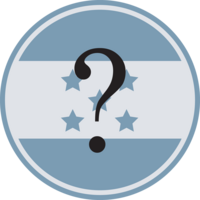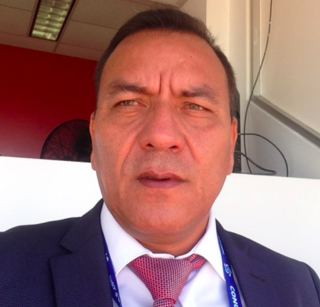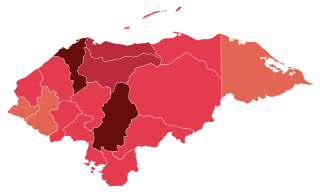 | ||
| Full name | Lempira de Guaruma Football Club | |
|---|---|---|
| Nickname(s) | Aborígenes | |
| Ground | La Lima | |
Lempira de Guaruma FC is a Honduran football club, based in La Lima originally from banana field Guaruma Uno, Honduras.
 | ||
| Full name | Lempira de Guaruma Football Club | |
|---|---|---|
| Nickname(s) | Aborígenes | |
| Ground | La Lima | |
Lempira de Guaruma FC is a Honduran football club, based in La Lima originally from banana field Guaruma Uno, Honduras.
Originally from La Lima Cortes, he was a local at the Francisco Morazan stadium in San Pedro Sula.
He was originally from banana field Guaruma Uno, there was an exaggerated devotion to playing soccer by children and adults in that field, there were times when the field to play soccer was insufficient in terms of time for everyone to play, hence the excellent players that Guaruma produced One.
They supported him as much as they could, even doing dances, to raise funds for the club.
Lempira that ascended to the Liga Nacional de Primera División in 1968, defeating Broncos de Choluteca twice in the promotion final, with scores of 2-1 and 2-0.
It was in the first division of the Honduran national league in the 1969, 1970 and 1971 seasons, a season in which it was relegated to the second division, They were relegated to second division for the 1971–72 season, drawing 0-0 with Vida
Its top leader was Dr. D.L. Richardson, an American national, who was chief of the Briden, where the Cloth did agricultural research, excellent manager, like very few, also had a team in the middle league, called Briden, and managed it as a Lempira reserve.
Years later, Lempira tried to return to the privileged league, but could not, we remember when in the final of the northern zone in 1974 against Atlántida de La Ceiba; In the first visiting game, Guaruma Uno won 3 to 1, but lost to Morazán in the return leg 4 to 0.
Then in 1979 against the Ribereña Youth of El Progreso; goalless draw at Morazán, they lost 3 to 2 in the visit to Humberto Micheletti.
In 1986 he sold the category while in the Second Division, a commercial name was added to his name (Lempira de Hermacasa), his identity was disrespected in every way, they took him to San Pedro Sula, and then at the beginning of the nineties he disappeared.
Among the players who participated in the club are: Dagoberto Cubero, Adolfo "Fito" López, Francisco "Pantera" Velásquez, Amílcar "Mica" López, Jairo López Alcerro, Melchor Argeñal, César Augusto Dávila Puerto, Robert Anthony "Charola" Gaynor, Samuel de Jesús "Chamel" Tejada, Carlos Alberto Acosta "El Indio" Lara, Mario Felipe "Cofra" Caballero Álvarez, Rigoberto Martínez, Eleazar Rodríguez, his coach was Rolando "Pato" López.
| Regular season | Post season | ||||||||||||||||||
|---|---|---|---|---|---|---|---|---|---|---|---|---|---|---|---|---|---|---|---|
| Season | Pos | P | W | D | L | F | A | PTS | +/- | Ded | Pos | P | W | D | L | F | A | PTS | +/- |
| 1969–70 | 9th | 27 | 7 | 5 | 15 | 33 | 45 | 19 | -12 | – | No post season this year | ||||||||
| 1970–71 | 9th | 27 | 5 | 9 | 13 | 25 | 44 | 19 | -19 | – | No post season this year | ||||||||
| 1971–72 | 10th | 27 | 5 | 6 | 16 | 24 | 45 | 16 | -21 | – | No post season this year | ||||||||

San Pedro Sula is the capital of Cortés Department, Honduras. It is located in the northwest corner of the country in the Sula Valley, about 50 kilometers south of Puerto Cortés on the Caribbean Sea. With a population of 671,460 in the central urban area and a population of 1,445,598 in its metropolitan area in 2020, it is the nation's primary industrial center and second largest city after the capital Tegucigalpa.

Cortés is one of the 18 departments of Honduras. The department covers an area of 3,954 km² and, in 2015, had an estimated population of 1,612,762, making it the most populous in Honduras. The Merendón Mountains rise in western Cortés, but the department is mostly a tropical lowland, the Sula Valley, crossed by the Ulúa and Chamelecon rivers.
La Lima is a city, with a population of 75,100, and a municipality in the Honduran department of Cortés.
The 2005–06 season in the Honduran Liga Nacional was the 41st in its history and determined the 47th and 48th champions in the league.

Liga de Ascenso is the second division of Honduran football; it was founded on 17 December 1979 as Segunda División and renamed Liga de Ascenso on 21 July 2002. The league is divided into 4 groups: Zona Norte y Atlántica, Zona Norte y Occidente, Zona Centro y Sur, Zona Sur y Oriente. The top 2 teams of each group qualifies for the liguilla (play-offs). Each season is divided into two tournaments, apertura (opening) and clausura (closing). The champion of the opening and closing tournament, compete for the promotion to Liga Nacional de Fútbol de Honduras in a two-legged match.

The Francisco Morazán Stadium is one of the three stadiums available to the city of San Pedro Sula, Honduras. It is an official stadium for games of the National League of Professional Football in Honduras; as well as, for international matches and international competitions of the Football Confederation of North, Central and Caribbean (CONCACAF) and FIFA.
The 2006–07 Honduran Liga Nacional was the 42nd edition of the Honduran top division. C.D. Motagua and Real C.D. España won the Apertura and Clausura tournaments respectively.
The 1990–91 Honduran Liga Nacional season was the 25th edition of the Honduran Liga Nacional. The format of the tournament consisted of a three round-robin schedule followed by a 5-team playoff round. Real C.D. España won the title after defeating C.D. Motagua in the finals. Both teams qualified to the 1991 CONCACAF Champions' Cup.
The 1970–71 Honduran Liga Nacional season was the 6th edition of the Honduran Liga Nacional. The format of the tournament remained the same as the previous season. C.D. Motagua won the title and qualified to the 1971 CONCACAF Champions' Cup along with runners-up Club Deportivo Olimpia.
The 1987–88 Honduran Liga Nacional season was the 22nd edition of the Honduran Liga Nacional. The format of the tournament consisted of two groups of five followed by a 5-team playoff round. Club Deportivo Olimpia won the title after defeating C.D. Marathón in the finals. Both teams qualified to the 1988 CONCACAF Champions' Cup.
The 1977–78 Honduran Liga Nacional season was the 12th edition of the Honduran Liga Nacional. The format of the tournament consisted of a three round-robin schedule followed by a 5-team playoff round. Club Deportivo Olimpia won the title after defeating Real C.D. España in the finals. It's unclear why no Honduran representation was sent to the 1978 CONCACAF Champions' Cup.
The 1975–76 Honduran Liga Nacional season was the 10th edition of the Honduran Liga Nacional. The format of the tournament consisted of a three round-robin schedule followed by a 4-team playoff round. C.D. España won the title after defeating Club Deportivo Olimpia in the finals. Both teams qualified to the 1976 CONCACAF Champions' Cup.
The 1989–90 Honduran Liga Nacional season was the 24th edition of the Honduran Liga Nacional. The format of the tournament remained the same as the previous season. Club Deportivo Olimpia won the title after defeating Real C.D. España in the finals. Both teams qualified to the 1990 CONCACAF Champions' Cup.
The 1971–72 Honduran Liga Nacional season was the 7th edition of the Honduran Liga Nacional. The format of the tournament remained the same as the previous season. Club Deportivo Olimpia won the title and qualified to the 1972 CONCACAF Champions' Cup along with runners-up C.D.S. Vida.
The 2011–12 season in Honduran Liga Nacional was divided into two tournaments and determined the 59th and 60th champions in the history of the league. It also provided two berths for the 2012–13 CONCACAF Champions League. The Apertura tournament was played in the second half of 2011, while the Clausura was played in the first half of 2012. A new change in the system was used for this season; unlike previous years, 6 teams qualified to the final round, matching team 3rd vs team 6th and team 4th vs team 5th, those who advanced played the semifinals against 1st and 2nd.
The 2014–15 Honduran Liga Nacional season was the 49th Honduran Liga Nacional edition, since its establishment in 1965. For this season, the system format remained the same as the previous season. The tournament began on 1 August 2014 and has ended in May 2015. On 20 December 2014, C.D. Motagua obtained its 13th national title after defeating C.D. Real Sociedad 2–1 on aggregate in the Apertura finals.
The 2015–16 Honduran Liga Nacional season was the 50th Honduran Liga Nacional edition, since its establishment in 1965. For this season, the system format remained the same as the previous season. The tournament began on 31 July 2015 and ended on 22 May 2016.
Independiente de San Pedro Sula was a football club located in San Pedro Sula, Honduras. The club played several seasons in the Honduran Liga Nacional as well in the Honduran Amateur League.

Carlos Ramón Tábora Hernández is a Honduran football coach and former player. He coaches the Honduras national under-20 team.

The COVID-19 pandemic in Honduras is part of the worldwide pandemic of coronavirus disease 2019 caused by severe acute respiratory syndrome coronavirus 2. The virus was first confirmed to have spread to Honduras on 10 March 2020, when two women tested positive for the virus after one of them landed on Toncontín International Airport in a flight from Madrid, Spain, and the other on Ramón Villeda Morales International Airport in a flight from Geneva, Switzerland. Confirmed cases have been reported in all 18 departments of the country, with the majority of cases located in Cortés and Francisco Morazán.